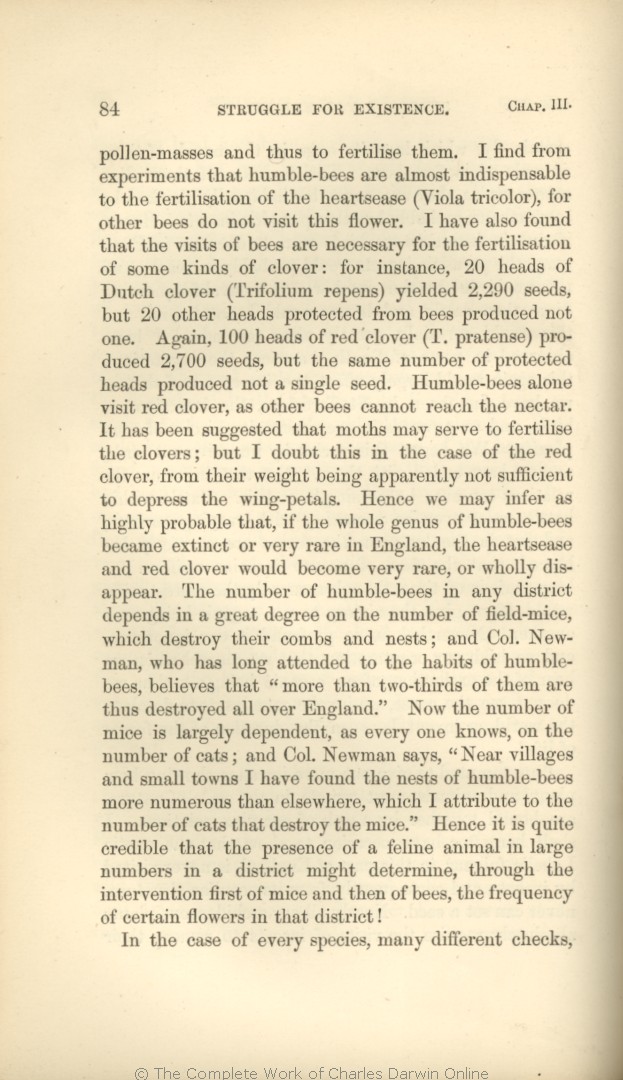pollen-masses and thus to fertilise them. I
find from experiments | find from experiments 1861 1866 1869 1872 |
| have, also, reason to believe 1859 1860 |
| almost indispensable 1861 1866 1869 1872 | | indispensable 1859 1860 |
| 1 blocks not present in 1861 1866 1869 1872; present in 1859 1860 | | From experiments which I have tried,
I have found that the visits of bees,
if not indispensable, are at least highly beneficial to
the fertilisation of our
clovers;
but humble-bees alone visit the common
red clover (Trifolium pratense), as other bees cannot reach the nectar.
|
| seeds, 1866 1869 1872 | | seeds; 1861 |
| produced 1866 1869 1872 | | pro- duced 1861 |
| serve to 1861 1866 | serve to 1869 1872 |
| this 1861 1866 |
| whether they could do so 1869 1872 |
| being apparently not 1861 1866 |
| not being 1869 1872 |
| wing-petals. 1861 1866 1869 | | wing petals. 1872 |
| we may infer as highly probable 1861 1866 1869 1872 |
| I have very little doubt, 1859 1860 |
| that, 1866 1869 1872 | | that 1859 1860 1861 |
| degree 1859 1860 1861 1866 1869 | | measure 1872 |
| Col. 1866 1869 1872 | | Mr. H. 1859 1860 1861 |
| two-thirds 1860 1861 1866 1869 1872 |
| two thirds of 1859 |
| of them 1860 1861 1866 1869 1872 | | them 1859 |
| Col. Newman 1866 1872 | | Mr. Newman 1859 1860 1861 | | Col.Newman 1869 |
| number 1859 1860 1861 1866 1872 | | numbe 1869 |
| of 1859 1860 1861 1866 1872 | | r of 1869 |
|









